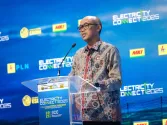Telcos face energy crunch from AI data centres
Telecom operators are exploring nuclear and greenfield builds to power next-gen data centres.
Telecom operators across Asia are being pushed to the brink by the soaring energy demands of AI-powered data centres, prompting a strategic rethink on how to scale sustainably.
According to PwC’s 2025 outlook, the rapid build-out of data centres is putting immense pressure on energy and resource management. High consumption rates have shifted attention toward alternative power sources—especially nuclear energy, which offers carbon-free, high-density output.
“The ability to use nuclear power for data centres is much more dependent on the country’s ability to have nuclear power,” said Abhishek Srivastava, Principal at Arthur D. Little Southeast Asia. “We see that the advanced countries in Asia which already have nuclear power in place can support the upcoming growth… whereas others, such as Indonesia, Malaysia, would have to be lagging behind.”
“The countries that would develop it fast would be China, South Korea and Japan, and, to some extent, India,” Srivastava added. “It’s not because nuclear power is difficult. It’s because there are geopolitical constraints regarding nuclear—that’s how the market is expected to evolve.”
Dustin Kehoe, APAC Head of Tech Research at GlobalData, noted that nuclear is already gaining traction globally. “There are 20 countries that are also looking at this option, and there are small nuclear reactors already in discussion,” he said. “They give you very high energy density… they’re not weather dependent. So nuclear power really is an option that should be talked about. It’s reliable, it scales.”
Yet for Asian telcos, challenges remain. “What member of the public wants to live next door to [a nuclear site]?” Kehoe added. “There’s the perception, there’s waste, and there’s regulation.”
Beyond sourcing cleaner power, Asian telecom firms also face structural emissions issues.
“The fundamental challenge in Asia for the Asian operators is the fact that we have super high CO₂ emission and intensity,” said Srivastava. “If you look at the main Asian operators, they are among the highest polluters in the world, primarily because their revenues are much lower. So the role has to be a very efficient path, a path of efficiency rather than massive investments.”
Srivastava recommends a three-step strategy: “Our approach… is towards reducing, optimising and monetising. Through careful reduction in terms of diversifying their energy sources, optimising them, as well as by monetising it… is the path forward.”
Meanwhile, telcos are investing in purpose-built infrastructure. “Most telcos have sold their data centres, and these were really very inefficient kilowatt sort of facilities,” said Kehoe. “You build the data centres from the ground up… with renewable energy sources in mind… these are like Greenfield facilities.”
He added, “SK Telecom, for example, is really big in building these next-gen AI data centres, and I think we’re going to see more of that in all new builds.”










